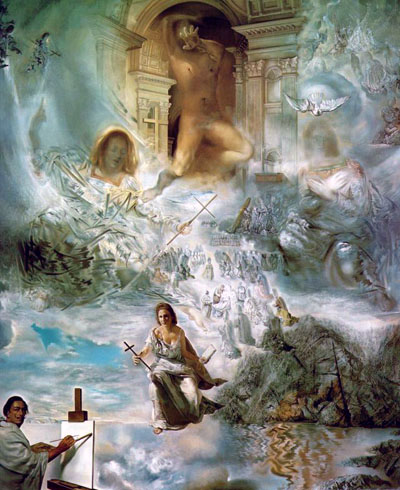Facts About The Ecumenical Council
"The Ecumenical Council" is a stunning surrealist painting by Salvador Dalí, completed in 1960. Measuring an impressive 299.7 by 254 centimeters, this piece is a rich tapestry of art history and religious imagery, with a strong emphasis on Catholic symbolism. Dalí was inspired to create this work following the election of Pope John XXIII in 1958, viewing it as a beacon of hope for religious leadership in the aftermath of World War II's devastation.
The painting is a vibrant depiction of the Holy Trinity, religious iconography, and personal symbols dear to Dalí, such as his wife Gala and the cliffs of Cap de Creus. It marks a significant point in Dalí's evolution as an artist, showcasing his transition from pure surrealism to a blend that incorporates religious themes. The work reflects influences from masters like Velázquez and nods to Renaissance art, while also expressing Dalí's perspectives on modern and classical painting styles.
Religious symbolism is woven throughout the piece, with references to Pope John XXIII, St. Helena, and even scientific theories. The painting's history includes a smaller study by Dalí called "The Trinity" and its eventual purchase by American art collectors Albert Reynolds and Eleanor Morse. These collectors later founded the Salvador Dalí Museum in St. Petersburg, Florida, where "The Ecumenical Council" now resides.

 Mexico
Mexico